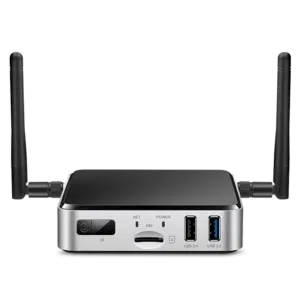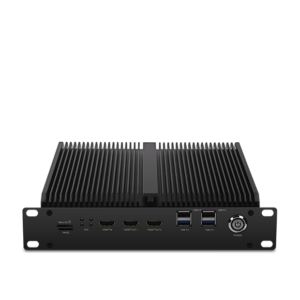A Extensive Information to Deploying AI on Side Devices
A Extensive Information to Deploying AI on Side Devices
Blog Article
Real-World Applications of AI on Edge Devices
Real-World Programs of AI on Edge Units
Synthetic intelligence (AI) is no longer limited to the region of big, centralized knowledge centers. Because of improvements in engineering, edge products today perform a key role in deploying AI directly wherever data is generated. But what does AI on side devices mean, and exactly why is it creating such a hype? Here, we'll examine how edge ai device operates in the real world through edge devices and reveal its wide variety of sensible applications.

What is AI on Edge Products?
AI on edge products describes deploying artificial intelligence calculations on units like smartphones, cameras, drones, or IoT sensors. These devices do not need usage of centralized servers for control data; instead, they accomplish analysis and decisions domestically, creating the process quicker, more efficient, and usually more secure.
The "edge" here just refers to computing performed near or at the origin of information technology, rather than counting on the cloud. This change is driven by the demands for real-time knowledge processing and the necessity to minimize latency, enhance privacy, and lower bandwidth usage.
Important Real-World Purposes of Edge AI
1. Smart Security
AI-powered cameras designed with skin acceptance, action detection, and anomaly detection are transforming security systems. Side units in that domain may analyze video revenues in real-time to identify dubious activities, remove false alarms, and improve public safety. For instance, AI algorithms may find unusual activities and alert authorities quickly without the need to send movie information to a central server for analysis.
2. Healthcare Tracking
Wearable products and portable medical gear are leveraging m.2 ai accelerator for controlling wellness information more efficiently. Edge-based AI in units like wellness trackers and smartwatches displays users' vitals, such as heartbeat, air degrees, or blood stress, in real-time. These methods analyze information locally and provide fast feedback, paving just how for faster treatment throughout emergencies.
Beyond wearables, advanced medical imaging units equipped with on-device AI may identify signs of diseases like cancer, enabling earlier in the day diagnoses even yet in rural areas without internet connectivity.
3. Autonomous Vehicles
Self-driving cars are among the most well-known examples of side AI in action. With receptors, cameras, and LiDAR programs providing as data resources, AI computations get position onboard these vehicles to create split-second decisions. From finding pedestrians and obstacles to navigating city streets, side AI guarantees that the vehicle operates reliably and efficiently. The real-time processing convenience of edge devices reduces the dependence on high-latency cloud programs, ensuring security in life-critical scenarios.
4. Retail Analytics
Side units in retail environments are helping firms analyze customer behavior. Smart shelves and AI-equipped cameras may detect client tastes, check catalog, and actually modify in-store activities in true time. The info generated from they helps suppliers make knowledgeable decisions, improve customer satisfaction, and optimize inventory management.

5. Professional IoT
Factories and commercial crops are adopting side AI to revolutionize their checking and automation processes. AI-powered detectors on equipment find potential errors well before they cause expensive failures. Predictive preservation pushed by side AI decreases downtime, enhances productivity, and ensures protection on the manufacturing floor.
6. Personalized Activities in Customer Products
Your smartphone is an excellent example of how edge AI personalizes user experiences. Functions such as voice assistants, versatile camera options, and on-device language translation use real-time AI to respond to person wants without giving sensitive information to additional servers. This fosters equally comfort and solitude for the finish user.
The Rising Impact of Edge AI
The use of AI on side products remains to spike, pushed by industries' raising demand for low-latency, real-time research, and greater information privacy. Their programs are reshaping industries including healthcare and automotive to public security and retail. By placing AI's energy nearer to wherever data is created, side units aren't only improving performance but additionally demonstrating the countless possible of innovation in the current attached world. Report this page